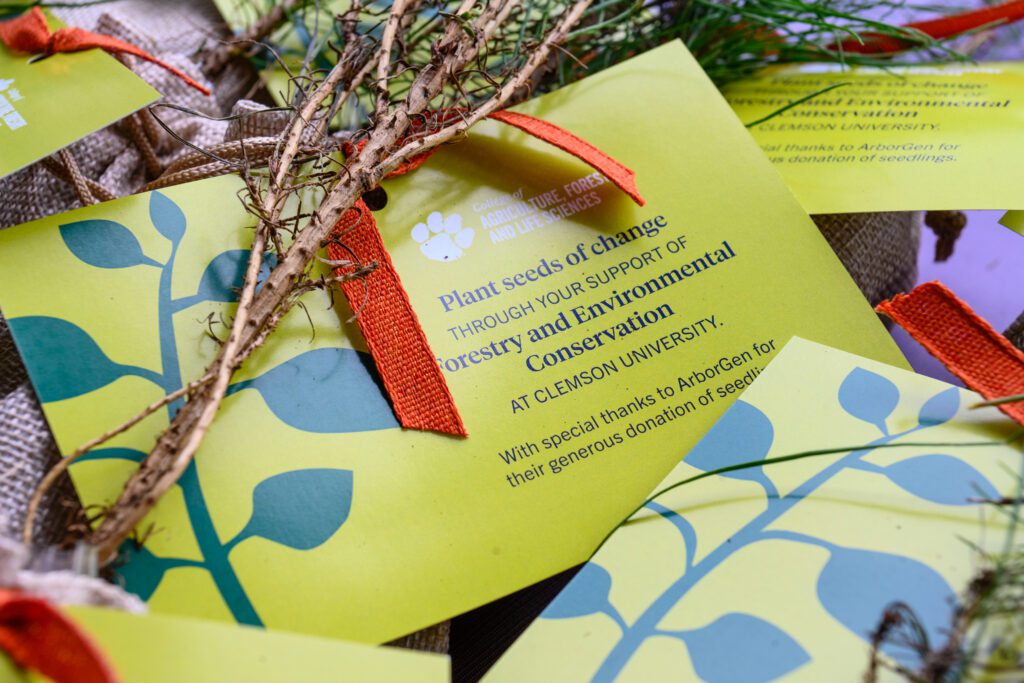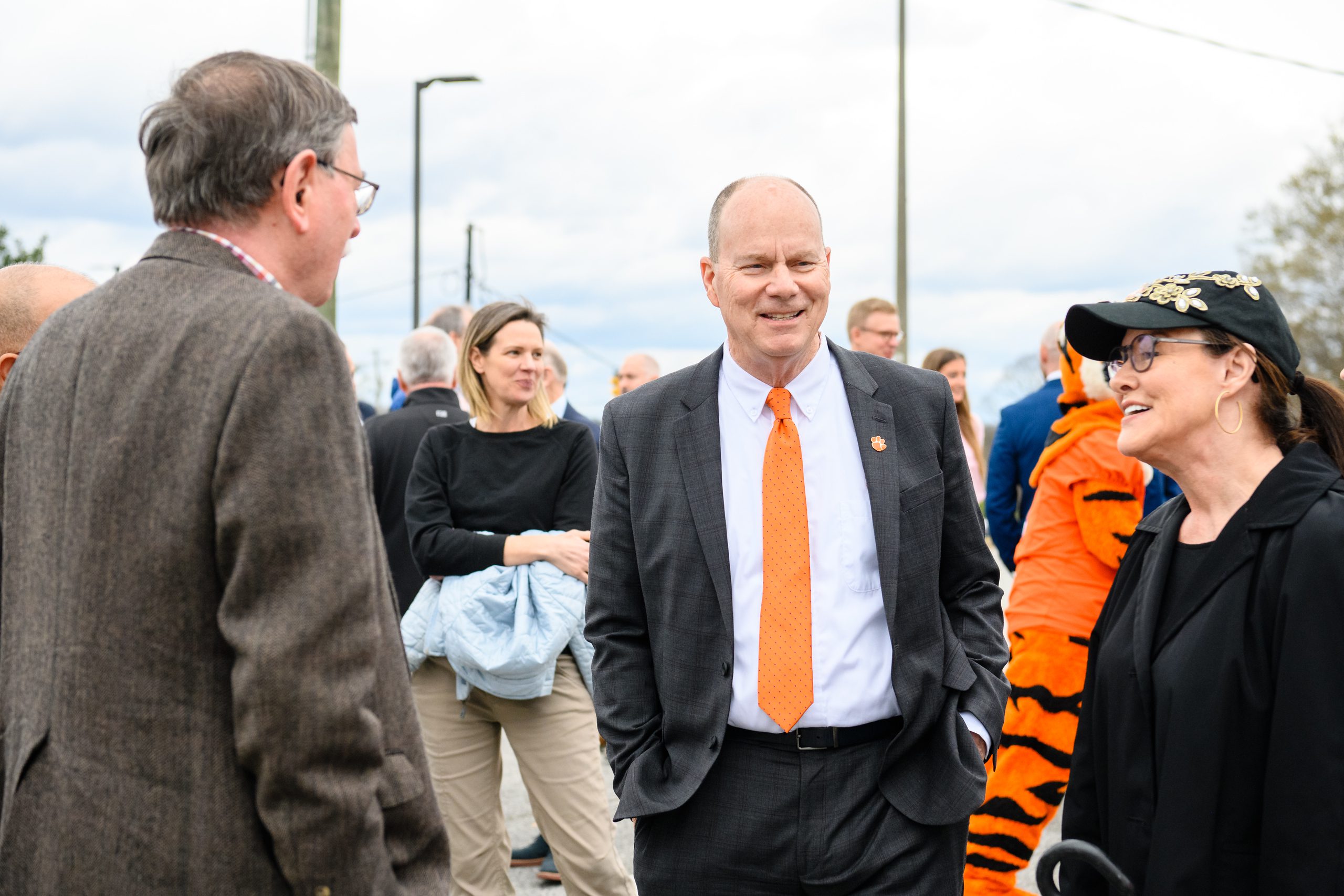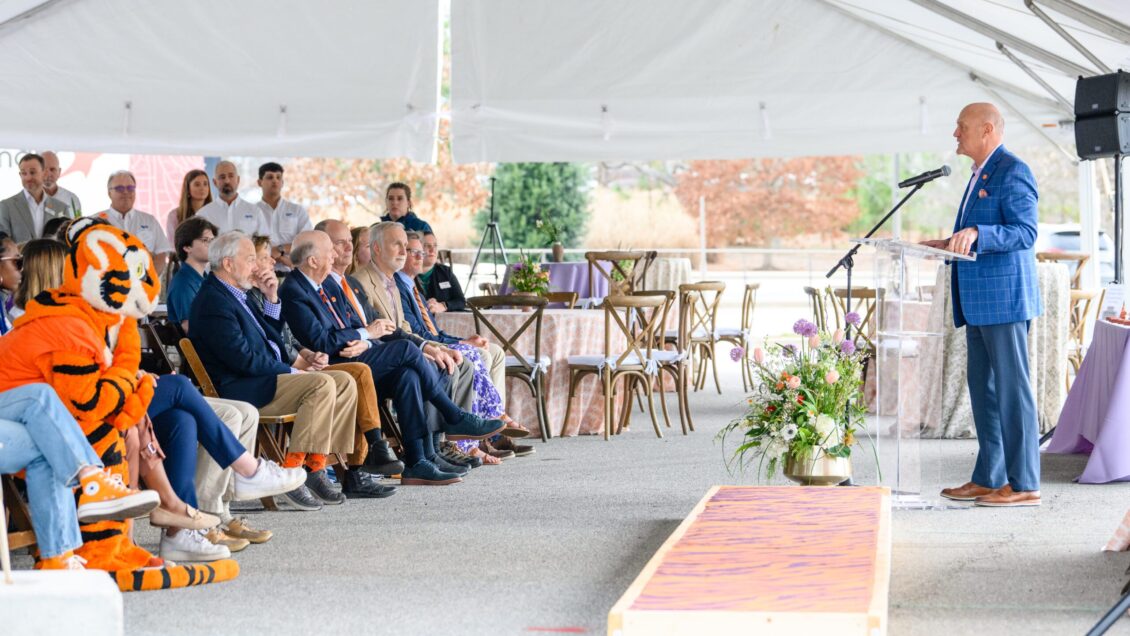New 85,000-square-foot, 4-level facility expected to be ready in 2026
Clemson University broke ground Friday on a new home for its Department of Forestry and Environmental Conservation (FEC) and, from a broader view, on a new era of stewardship for South Carolina’s natural resources.
Upon projected completion in early 2026, the 85,000-square-foot building on the northeast corner of Cherry and Perimeter roads will replace Lehotsky Hall as the department’s nerve center on campus.
South Carolina’s forests are among its most valuable assets — not just in financial terms — as both a distinctive feature of its landscape and a renewable resource with recreational, wildlife and environmental benefits.
But there is no denying their economic impact: Forestry generates $23.2 billion annually in the state and accounts for more than 100,000 jobs, according to the S.C. Forestry Commission.
As the university pursues a bold strategic vision, Clemson Elevate, the facility empowers FEC to continue to “elevate” in keeping with that blueprint.
President Jim Clements said at the groundbreaking that it served as an important reminder of why the university was founded, quoting the Will of Thomas Green Clemson, its founder and namesake.
“Mr. Clemson stated: ‘My purpose is to establish an agricultural college … a high seminary of learning. … I trust that I do not exaggerate the importance of such an institution for developing the material resources of the state.’”
We were created to serve our state as a land-grant institution and to give people a path to a better future through education; the new Forestry and Environmental Conservation Building will continue to meet the Will of Thomas Green Clemson and our mission and vision as an institution. This building is also an opportunity for Clemson to create an environment that serves to attract the best and brightest minds and continues our mission of recruiting and retaining top talent.
JIM CLEMENTS, CLEMSON UNIVERSITY’S 15TH PRESIDENT
Clemson’s new forestry hub positions the department for future growth at a time when both its undergraduate and Ph.D. enrollment have reached all-time highs and research funding skyrocketed to more than $20 million last year from $2.6 million in 2020.

The space will include classrooms, labs, collaboration spaces, offices and support areas across four levels, as well as an outdoor lab for easy access to Hunnicutt Creek, a garden courtyard and an indoor-outdoor connection throughout the space.
Provost Bob Jones, a two-time FEC graduate himself, said he was honored to be part of the groundbreaking.
“Since my time as a student, I have witnessed Clemson set new records in student success, research, outreach, diversity, athletics, fundraising, industry partnerships, innovation and impact — thanks in part to the visionary leadership of my friend and colleague, Dr. Jim Clements,” Jones said. “Over President Clements’ decade of leadership, Clemson University has continued to attract some of the best and brightest minds to take on the evolving challenge of conserving our earth’s natural resources — across South Carolina and beyond.”
Clemson’s Department of FEC seeks to prepare leaders in sustainable forestry and wildlife and fisheries conservation and ecology through instruction, scientific inquiry and outreach to citizens of South Carolina, the nation and the world.
The agriculture and forestry industries — collectively known as agribusiness by the S.C. Department of Revenue — represent the state’s largest economic sector and fastest-growing industries, expanding by 40 percent between 2010-20.

Department Chair Todd Petty said, because of the industry’s impact on the state economy, the intellectual space where teaching and learning about forestry happen at Clemson has significant meaning to the citizens of South Carolina.
“With this new building, our faculty, staff and students will have a physical space within which we can meet the expanding and everchanging needs of the forest industry and natural resource management professions,” Petty said.
The building will showcase mass-timber construction and advanced applications of wood products and technologies that are an essential part of modern conservation and forestry sciences and feature a native flora landscape that connects workspaces to the natural environment.
College of Agriculture, Forestry and Life Science (CAFLS) Interim Dean Greg Yarrow said the building is a testament to the importance of forestry and natural resources to Clemson and the state it calls home.
“This is an exciting and monumental day for our students, faculty and staff and for the citizens of South Carolina who depend on the management and sustainability of South Carolina’s forests and the conservation of our natural resources,” Yarrow said. “This building will be more than wood, bricks and mortar; it will be a hub of innovation, research and education.
“It will help us lead into a sustainable future, where students and faculty alike come together to tackle the most pressing forestry, natural resources and environmental issues of our time.”

Get in touch and we will connect you with the author or another expert.
Or email us at news@clemson.edu

